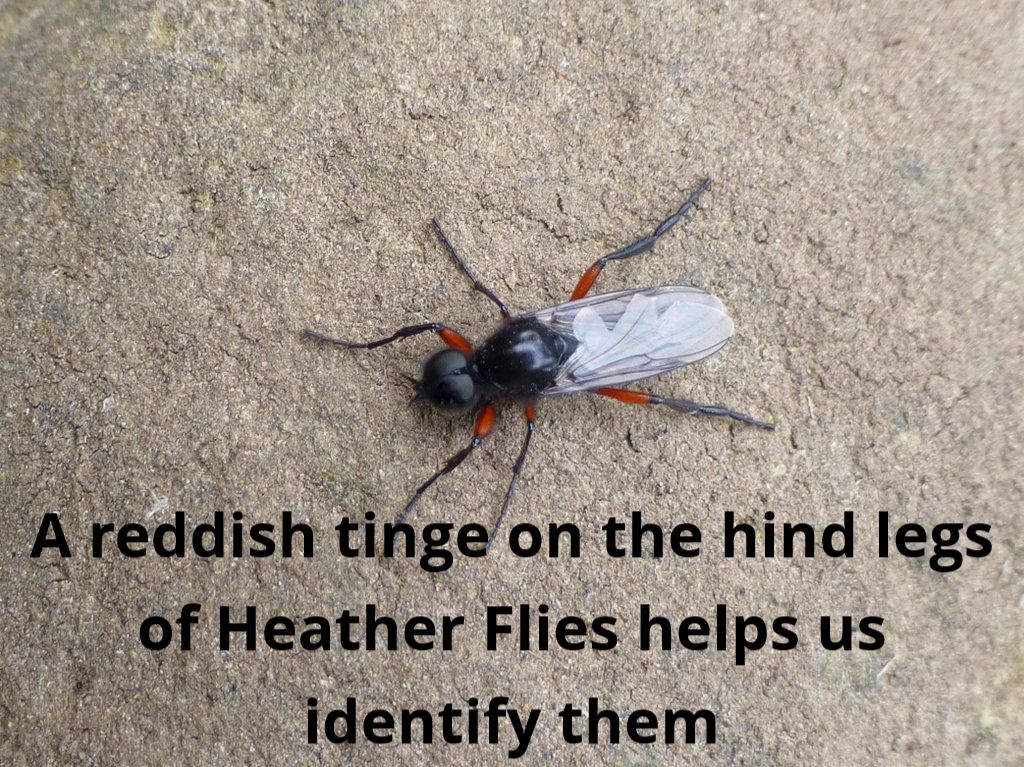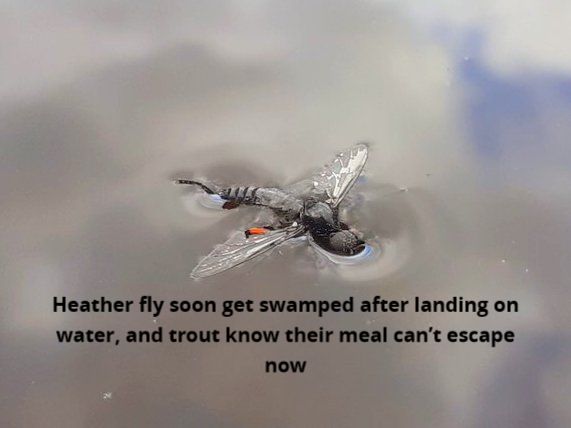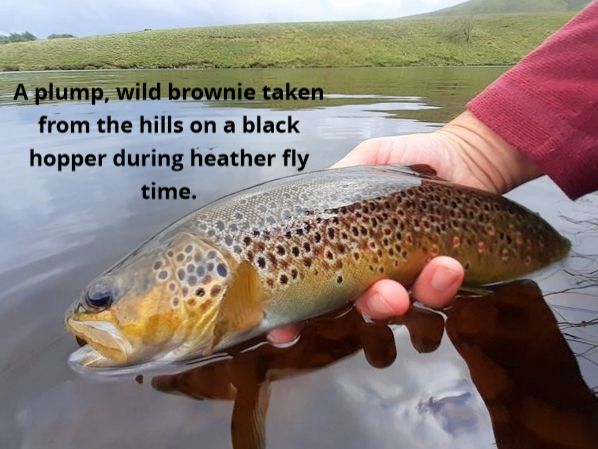Dog Days
If you are enjoying your fishing and already planning your August fishing trips then this is the guidance you will need. All our advice articles are provided by our very experienced national and international anglers who want to help you as much as possible.
August time is often referred to as the “dog days” on stillwaters, when potential blistering hot weather plunges both trout and flies into the doldrums, especially on lowland waters that are rich in nutrients. Of course there’ll be the usual display of buzzers, or caddis at last knockings, but this amounts to nothing tangible, if you’re facing along drive home after several hours staring at seemingly lifeless water.

Head for the hills however and you’re likely to find a totally different set of circumstances. Here, a freshening breeze not only keeps water stirred up and oxygenated, it encourages insects onto the wing, with Heather Flies being the most notable. A close cousin of the much revered Hawthorn Fly, Heather Flies are instantly recognizable by a reddish tinge to their hind legs.
What to look for:
Heather flies usually occur on most upland slopes or fells that are left fallow. And whilst their common name suggests they are found where heather thrives, heather flies are just as likely to crop up on bracken clad fells, or where tussock grass forms. Often, you’ll see them gathering along the water’s margins as they look for a mate.
Naturally, any breeze is going to whip these weak fliers over water, where they get deposited. Initially, trout take them with a splashy rise. However, once the twig their meal gets swamped their consequent rise forms are mere dimples. So, if you see black flies in the air and fish quietly sipping, chances are they’ll be on heather flies!

What to use:
As dry fly is the order of the day a floating line is all you’ll need. This should be a weight forward (WF) profile to deal with niggling breezes and of course, achieve distance where it is needed. The Cortland WF 444SL is as slick as any. A tapered leader helps with turn over to deliver your fly accurately with a degree of delicacy. The Wychwood 12ft ghost mode tapers with a 6lb tippet are perfect. This is single fly territory too, as blustery weather has a habit of tangling teams of flies. Equally, you’ll find picking up and re-presenting quickly is far less fussy when using just one fly.
It’s best to search the margins using short casts and leaving your fly on the water for 10-20 seconds before lifting off and placing the fly somewhere else. Naturally, loose coils of fly line should be held in reserve for when you see a fish move, as these should be covered instantly.




















